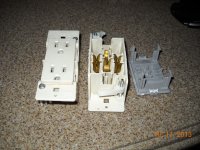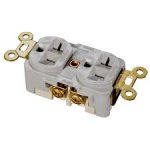wdk450
Well-known member
Gang:
I have previously posted about these outlets, how they make a poor electrical connection that can be shaken loose during travel vibrations, and how they are are a poor fit for high current applications like electric space heaters. Some owners disputed that these have been used, or even exist. I finally changed out 3 outlets yesterday, and here is a picture of the outlets. Note the complete lack of wire termination screws.

I had to add plastic outlet boxes, outlets, and outlet covers to do the job. The outlet boxes required that the cutouts in the wood paneling had to be widened about 1/8 of an inch. I did this easily in the thin paneling with a paring knife.
I have previously posted about these outlets, how they make a poor electrical connection that can be shaken loose during travel vibrations, and how they are are a poor fit for high current applications like electric space heaters. Some owners disputed that these have been used, or even exist. I finally changed out 3 outlets yesterday, and here is a picture of the outlets. Note the complete lack of wire termination screws.

I had to add plastic outlet boxes, outlets, and outlet covers to do the job. The outlet boxes required that the cutouts in the wood paneling had to be widened about 1/8 of an inch. I did this easily in the thin paneling with a paring knife.


